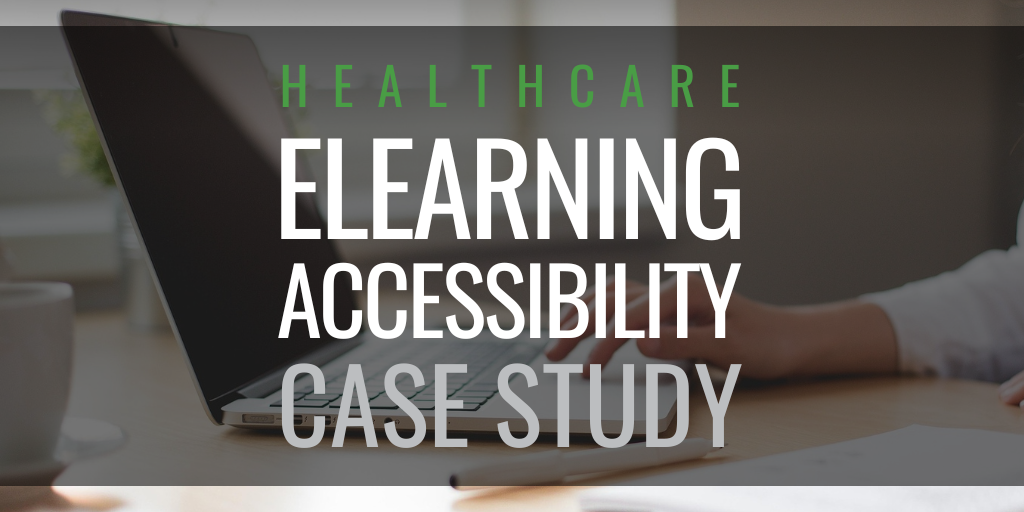What is SCORM? And why do we need it?
/This is the first post in a three-part eLearning series based on a recent webinar, "Creating Effective & Engaging eLearning in Your LMS" by Stephanie Jutras of Limestone Learning and Sean Hougan of Lambda Solutions.
If you’re just getting into eLearning, you may have heard the word SCORM come up. Terms like “SCORM-compliant” or “SCORM-conformant” get tossed around the instructional design world. But what does SCORM mean for you if you’re just starting out developing eLearning?
SCORM is actually an acronym:
SHARABLE
CONTENT
OBJECT
REFERENCE
MODEL
If this sounds intimidating, fear not. In plain language, SCORM is a set of technical standards that enable eLearning technology—such as published eLearning courses and Learning Management Systems (LMSs)—to play nicely with each other. By defining the sharable content objects within your eLearning, SCORM makes your course interoperable with various learning management systems—much the way CDs or DVDs operate in a variety of manufacturers’ players. SCORM also allows you to seamlessly integrate various types of content from different sources into your LMS or Learning Content Management System (LCMS). A SCORM-compliant course can share data about how learners interact with a course with the LMS, including completion and performance information that tracks learner performance in courses for record keeping, reporting and analysis purposes. Other interoperability specifications exist, but SCORM has become the de facto standard for eLearning.
So how do you make sure your course is SCORM-compliant?
These days most eLearning courses are built with authoring software such as Adobe Captivate, Articulate Presenter, Articulate Storyline, Lectora, and many others. Such tools enable developers—even those without a programming background—to create sophisticated courses that can be hosted in different ways—on the web, on disc, or in an LMS. Once a course is built using one of these tools, it is published into a format optimized for where it will be hosted. The vast majority of authoring software tools have the option to “publish to SCORM” for use within an LMS. Other options can include things like publish for web and publish for mobile devices.
Is it easy to publish to SCORM?
Publishing to SCORM is usually easier than it sounds, even for less technical users. Before you publish to SCORM, you’ll need to define the information the course needs to communicate with the LMS. Most LMSs have guidelines for SCORM settings—taking the time up front to determine these will save you time in troubleshooting in the long run.
Settings are usually selected through checkboxes and dropdown menus. Examples of the settings you can define include:
When is the course complete? When the learner has viewed all pages? Or when the learner completes a test? Or do you want learners to view all pages and complete a test in order for the course to be marked ‘complete’ in the LMS?
When does the LMS receive notification that the course has been passed?
What version of SCORM do you want to use? SCORM has evolved over the years. Currently most LMSs work with one of four implementable versions of SCORM 2004. It’s best to check your LMS to determine the preferred version to use.
Once you’ve determined your settings, the next step is to publish the course. The authoring tool zips up a SCORM package that you can put into your LMS.
The value of SCORM is in the information it allows you to gather about how your learners are interacting with your courses in your learning management system. Here’s an example: you’re reviewing learner performance in a course in your LMS and you notice a pattern: many learners are having a particular challenge with review exercises in a certain area of a course, more so than other areas. Because you have this information, you can investigate the reason behind this and address it. Perhaps the learning content needs to be revised, or the review exercises are difficult to understand. Without the communication that SCORM supports, this kind of evaluation and improvement of courses as well as the tracking of learner performance is a lot more challenging.
The future of SCORM looks bright. Next-generation SCORM, known as Tin Can API, or xAPI, is currently in development and is looking at ways to track what learners are doing far beyond your LMS. Check out this informative article to learn more.
Next up - Part 2 of 3 in our series on creating effective and engaging eLearning: 5 Dos for Creating eLearning.







